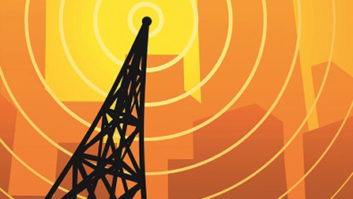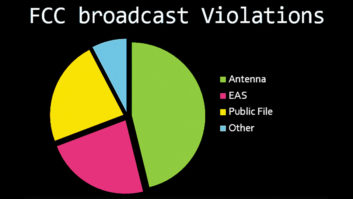NAB says FM translators are the answer
Oct 1, 2006 12:00 PM, By Harry Martin
FM translators have become the latest fad, offering a low-power solution to a wide range of woes. In July, the National Association of Broadcasters (NAB) asked the FCC to amend its rules to allow AM stations to use FM translators. As the NAB observed, nighttime interference forces thousands of AM stations to reduce power or cease operations between sunrise and sunset. That problem, together with the increasing number of external factors contributing to AM coverage gaps, imposes burdens that arguably warrant FCC intervention.
FM translators could provide a solution for AM coverage problems. The NAB is asking the Commission to allow use of FM translators to provide fill-in service for AM stations, with the translator signal limited to the lesser of the 2mV/m daytime contour of the AM station it rebroadcasts or a circle with a 25-mile radius surrounding the AM station. The petition submits that retransmission of AM stations by FM translators presents a technically feasible, pro-competitive and pro-public interest solution to signal-loss problems. Translators would not only allow daytime-only stations to operate at night, they also would improve daytime service, as FM translators would help overcome intervening terrain barriers and distance issues.
The NAB petition � and the FCC’s reaction to it � is controversial. Recall that NAB opposed a similar proposal made by the American Community AM Broadcasters Association in 1997, a proposal that was similarly based on the use of FM translators to overcome AM nighttime signal disruption. The NAB now asserts that �continued pressures on AM radio� and the need for �another boost to enhance AM stations’ ability to serve audiences and compete in the ever-changing media marketplace� have ripened the issue for re-examination. A footnote in the NAB petition expands on this general rationale, stating that �AM stations are encountering ever more interference problems as a result of an increase in ambient noise.�
The NAB does not specify the source of that increase in ambient noise, but one possible source is in-band on-channel (IBOC) digital radio operation. Hybrid analog/digital AM operation requires a great deal more bandwidth than analog alone, which in turn increases the potential for adjacent channel interference. Hybrid AM operations are currently permitted only during the day due to concerns about adjacent-channel interference at night. But in June 2004, the NAB recommended that the FCC authorize hybrid AM operation at night, a recommendation that would invite an increase in potential AM interference problems.
The hybrid AM proposal got the FCC’s attention in July 2006, when it was one of several proposals in an agenda item the Commission was scheduled to consider at an open meeting. But the Commission dropped the item from its agenda the day before the NAB filed the translator proposal. This sequence of events suggests that the proposal for FM translator use by AM stations may have been conceived by the NAB to complement the IBOC hybrid proposal for AM because translators in AM stations’ hands would help ameliorate the additional interference that would emanate from hybrid AM operation at night.
If the FCC genuinely is concerned about the potential impact of FM translators on LPFM service, a policy issue being fiercely debated in another proceeding, why would the Commission be attracted to the NAB’s plan to help lowly daytime AM stations and forego the opportunity to create more local LPFM stations? And this at a time when the FCC’s processing line is choked with thousands of mutually exclusive translator applications that have been on file for more than three years.
The Commission may have a long-range plan for FM translators, a plan that somehow will accommodate increased translator use (for AM and FM stations) and protection of LPFM service. Alternatively, putting the NAB’s translator proposal on a fast track may have no policy implications at all, and merely signify the agency’s willingness to broaden the debate on the role of translators.
Dateline
Dec. 1 is the deadline for radio stations in Colorado, Minnesota, Montana, North Dakota and South Dakota to file their biennial ownership reports.
Dec. 1 is the date on which radio stations in Alabama, Colorado, Connecticut, Georgia, Massachusetts, Maine, Minnesota, Montana, New Hampshire, North Dakota, South Dakota, Vermont and Rhode Island must place their annual EEO reports in their public files and post them on their websites.
Martin is a past president of the Federal Communications Bar Association and a member of Fletcher, Heald & Hildreth, Arlington, VA. E-mail[email protected].












